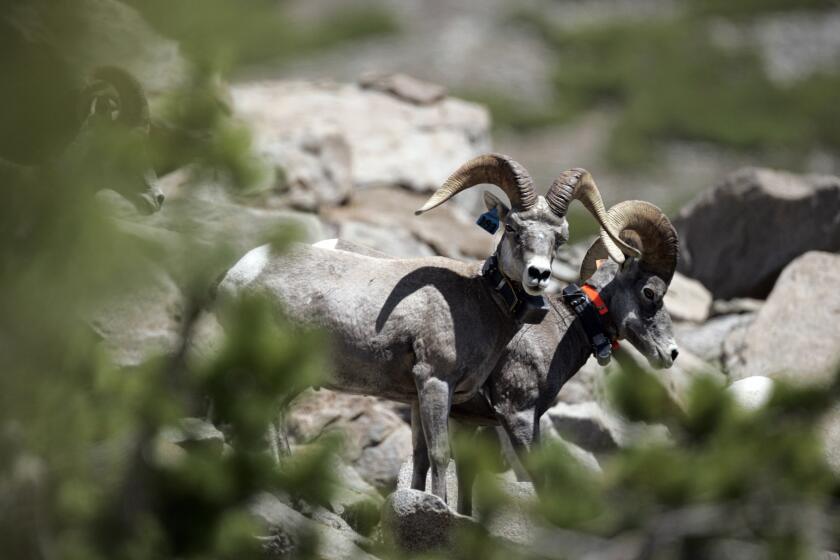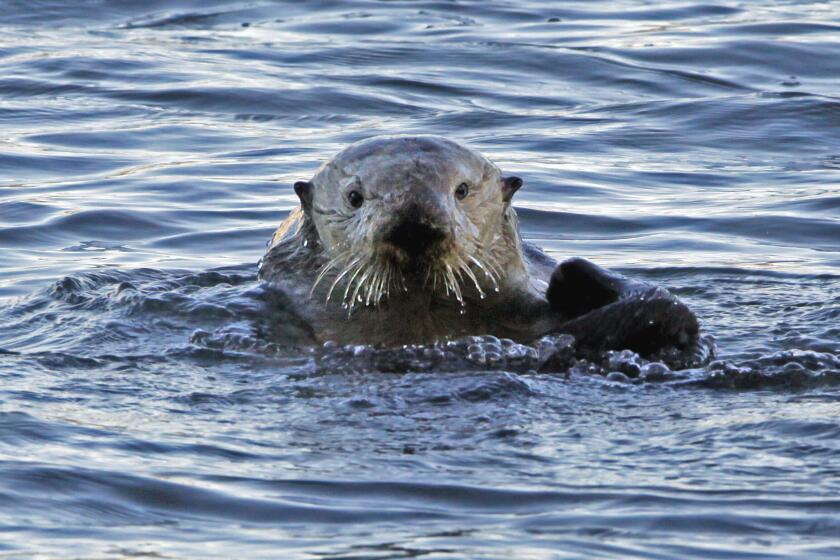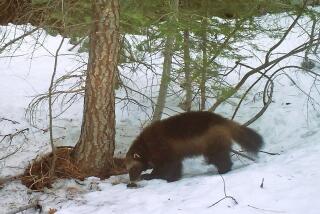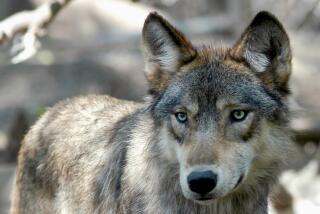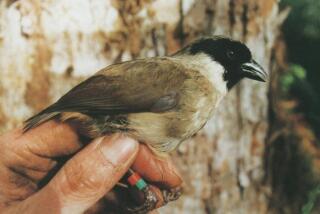Opinion: How bringing back the woolly mammoth could save species that still walk the Earth
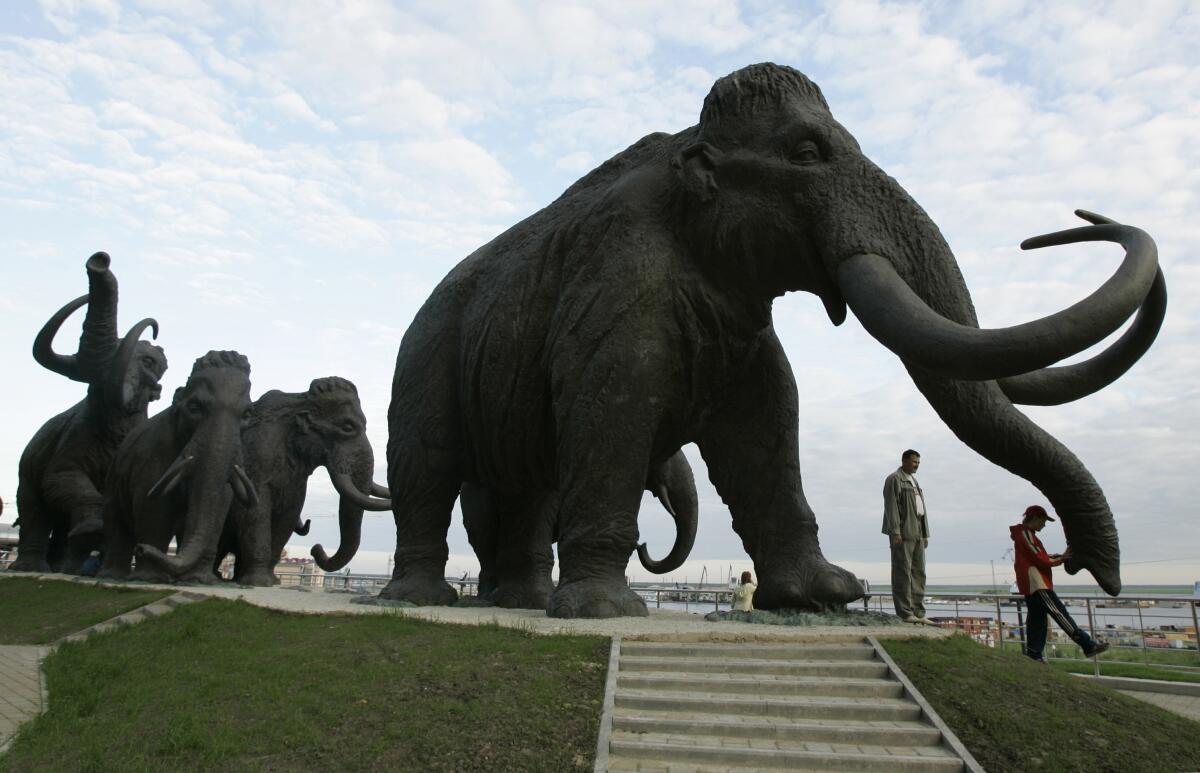
As more species are pushed to the brink of extinction, conservationists are responding to our biodiversity crisis in new and sometimes controversial ways. One such novel approach could be described as the mammoth in the room: “de-extinction” technology that has the potential to protect and restore species on the brink of extinction and, more provocatively, those that disappeared from the planet long ago.
We can avoid such innovation and the controversy that comes with it. But the reality is that many milestone moments in conservation have been contentious.
Take the California condor, whose population was down to 22 known individuals in 1982. At the time, taking all the animals out of the wild for a captive breeding program sparked outrage among conservation professionals and in local communities. Today, however, thanks to those efforts and subsequent reintroductions of the birds into the wild, their population exceeds 500. Now captive breeding programs are regularly used to maintain and restore a variety of threatened species.
This endangered California species has survived ice ages, livestock disease and climate change. The greatest threat to it today may be a once-scarce predator.
Or consider conservationists’ difficult decision in 1995 to relocate eight female mountain lions from Texas to infuse new genes into the population of Florida panthers, a subspecies of the puma. Only about 30 Florida panthers were left at the time, and inbreeding had rendered them susceptible to disease and other health problems. Although this genetic rescue effort was highly controversial at the time, it was also very successful, decreasing the effects of inbreeding and allowing the population to steadily grow. Today about 200 adult panthers live in southwest Florida, and the intervention is regarded as a model.
The use of assisted reproductive technology such as artificial insemination and in vitro fertilization to bolster dwindling species has been a more recent subject of debate within the conservation community. But since these tools were introduced, they have become standard among zoos’ “insurance” populations of threatened species and in captive breeding programs aimed at reintroducing species into the wild.
Our organizations, the biotechnology company Colossal Biosciences and the conservation group Re:wild, recently announced a partnership to use de-extinction technology to protect and restore species on the brink of extinction. It is a powerful collaboration between an organization with extensive experience in wildlife and ecosystem conservation and a company that is using gene editing and genetic engineering technology to make extinction a thing of the past.
Since the 1960s, a remnant population of sea otters has revived Monterey Bay. But they can’t migrate north throughout their historic range without human help.
Both Re:wild and Colossal want to save species that are going extinct now. But at the heart of Colossal’s mission is a belief that the science to restore and recover species on the brink can be accelerated by moonshot projects such as reviving the mammoth or the dodo. This focus on de-extinction, or bringing back extinct species, is understandably a subject of vigorous debate.
So it’s no wonder that our partnership caught some in the conservation community by surprise. Even internally, it took lots of thoughtful and nuanced discussion — involving often passionate and sometimes seemingly insurmountable differences — to align around shared goals.
In the end, even though Re:wild has reservations about whether the woolly mammoth and other extinct species should be returned to Earth, the organization will advise on the feasibility of such reintroductions because of the projects’ potential to generate technology that could save hundreds of critically endangered species. We will work together to study the advantages, disadvantages and feasibility of each reintroduction, working with local interests and a cross-section of the conservation community. With the world’s sixth great extinction event upon us, we need every available tool to prevent extinctions and accelerate species restoration.
The conservation community has recovered species from the brink of extinction — some of which were down to a few individuals — but every one of those recoveries has been hard-fought. We will be able to restore critically endangered species much more quickly by combining Colossal’s technology with proven approaches such as conservation breeding programs, translocations of endangered species populations, assisted reproductive technology, biobanking of threatened species’ tissues and cells, and genetic rescue.
We are already seeing the benefits of Colossal’s technology for threatened species. The tools and techniques developed for every effort to bring a species back from extinction will also benefit closely related species that still live.
The woolly mammoth project, for instance, has sequenced the genomes of both the Asian elephant and the African elephant; has developed induced pluripotent stem cells with the ability to differentiate into other types of elephant cells; and is accelerating a cure for the deadly elephant herpes virus. Many extant marsupials will likewise benefit from the technology Colossal is developing to bring back the thylacine, an extinct carnivorous marsupial also known as the Tasmanian tiger or Tasmanian wolf. That includes the development of artificial pouches and synthetic milk, which will enable expanded conservation breeding programs and reintroduction efforts.
We’re also using or planning to use this technology to protect and restore northern white rhinos, Sumatran rhinos, pink pigeons, Tasmanian devils, northern quolls (a small carnivorous marsupial) and many other species.
Not everyone agrees that a headline-grabbing de-extinction of the woolly mammoth would be beneficial to our planet. But it’s hard to dismiss the project’s capacity to create tools and technologies that can prevent countless species from going extinct in the first place.
Our partnership is also allowing us to tap into new sources of conservation funding that would not be available without the interest that de-extinction generates. Even though it will always be cheaper and easier to save a species from extinction than to bring it back, we still need more resources to combat the biodiversity crisis.
Conservation is not easy, and the extinction crisis has no single solution. With an estimated 12% of bird species, 26% of mammals, 31% of sharks and rays, 36% of reef-building corals and 41% of amphibians at risk, we need to consider every tool we have to secure the future of our planet and all the life on it. We look forward to the day de-extinction technology is commonly used to restore endangered species and we’re considering the next conservation moonshot.
Matt James is Colossal’s chief animal officer. Barney Long is Re:wild’s senior director of conservation strategies.
More to Read
A cure for the common opinion
Get thought-provoking perspectives with our weekly newsletter.
You may occasionally receive promotional content from the Los Angeles Times.
